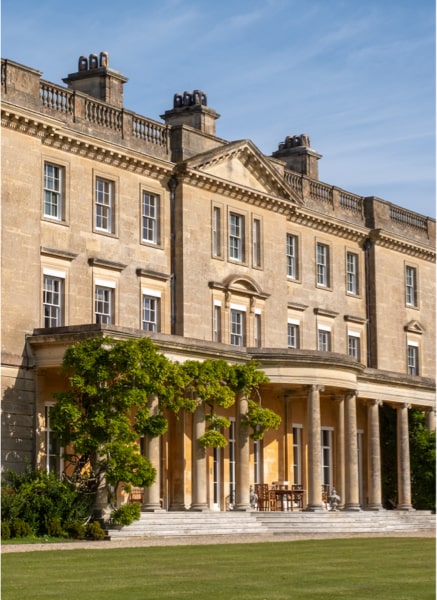The French Riviera is luxurious, but nothing quite compares to the Palais Bulles. The “Bubble Palace,” as it’s known, is the most extravagant—and eclectic—home on the French Riviera. Set in Théoule-sur-Mer near Cannes, it was built in 1975—taking 14 years to construct—by Hungarian architect Antti Lovag, before it was bought in 1991 by Pierre Cardin. But now that the legendary French fashion designer passed away on December 29, what will happen to this iconic private home?
The home was listed in 2017 for $420 million, but it didn’t sell. It is known to local real estate brokers as the place nobody wants to buy, despite being an incredible masterpiece in its own right. It has been on the market for years, but Christie’s International Real Estate sales agent Michael Zingraf declined to comment whether Palais Bulles was still on the market.
The 13,000-square-foot home has 29 rooms, including 10 bedrooms and 11 baths, and the villa has its own private outdoor auditorium that can seat 500 people. Cardin would rent it out to vacation groups for $33,200 a day.
Cardin never lived at the mansion but instead nearby, as the space was used just for entertaining. In 2017, Zingraf told The New York Times that it’s a work of art to be cherished. “Owning it is not only a question of money,” he said. “It needs someone who will fall in love with it, who shares and understands Mr. Cardin’s vision.” Hugh Wade-Jones, managing director of Enness Global Mortgages, says that the future remains unknown for Palais Bulles.
“The Palais Bulles is undoubtedly an iconic piece of real estate; however, the predominant opinion is that the property is a bit of a white elephant,” says Wade-Jones. “It’s architecturally incredible but largely impractical for residential living and would require a huge amount of work to remedy that.”
But that doesn’t mean he believes someone shouldn’t take on the task. “It would be an extreme shame to see such a beautiful piece of real estate fall by the wayside, and so perhaps a repurposing within the commercial market can be found,” he adds. “Unfortunately, it’s ultimately useless in its current form.”
The home is no doubt a work of art. It has round, bubble-like forms, which ties into Cardin’s own futuristic style of ’60 mod-era fashion design. Cardin said of the Palais Bulles, “This palace has become my own bit of paradise. Its cellular forms have long reflected the outward manifestations of the image of my creations. It is a museum where I exhibit the works of contemporary designers and artists.”
With stunning views of the Mediterranean from a rocky cliff in the Cote D’Azur, it’s a cultural hub, in that it has been rented out for Christian Dior fashion shows, Cannes Film Festival parties, and private galas. But should it become a public museum? Perhaps.
Cristiano Raimondi, a Monte Carlo–based curator with Monaco’s Nouveau Musée National, says that the Palais Bulles is part of a long history of artist homes along the French Riviera. Henri Matisse made nearby Nice his home in the 1930s, while artist Jean Cocteau lived at the Villa Santo Sospir on Cap Ferrat for months (roughly a one-hour drive east of Palais Bulles), even hand-painting the walls.
Furniture designer and architect Eileen Gray’s white, minimal, modern villa built in 1929 is along the French Riviera, too (and was an obsession of Le Corbusier), and Pablo Picasso’s villa in Mougins still stands today, though privately owned. There’s the culture hub the Prince Pierre Foundation, founded by the Prince of Monaco, too. “We have a lot of villas with a lot of history down here in the coast, and artists are invited to do projects and make artwork that responds to the history and the place, which I think is good,” says Raimondi. “It’s a tradition that reveals how life has changed. If those places can be open to the public, all the better. My opinion is that Palais Bulles deserves to be open and visited. Even better if there is the possibility to do research, artist residencies, or site-specific projects, or have visits from architecture and design schools, for students, as it’s an important piece of architecture.”
The architect, Lovag, first designed the Palais Bulles as an experiment. He saw architecture as a “form of play—spontaneous, joyful, full of surprise,” and hated the straight line. He once called the straight line “an aggression against nature,” which was radical for its time.
Richard Zarzi, an artist who has lived in Cannes for 20 years, has hope for the next owner of Palais Bulles. “I would like the new owner to open it up to the public as a venue to be used for parties and the Cannes Film Festival,” said Zarzi. “The building is historic and an architectural beauty so worth showing off.
“Pierre Cardin was a great designer; his avant-garde style and spaces were legendary,” he adds. “He had a really long and beautiful life.”



